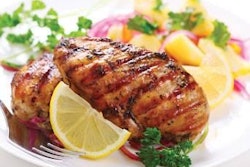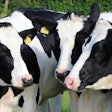In the recent issue of Poultry Science, there is an unusual number of research reports on ducks and geese, which only signifies the increasing importance of these species in poultry production, worldwide. The following are the relevant titles for your review, along with a short take-home message.
- Dietary threonine requirement of Pekin ducks from 15 to 35 days of age based on performance, yield, serum natural antibodies, and intestinal mucin secretion
Take-home message : Apparent ileal digestible threonine requirements were estimated to be 0.52 to 0.66 percent by quadratic and 0.47 to 0.56 percent by quadratic broken-line model, respectively. - Effect of corn silage and quantitative feed restriction on growth performance, body measurements, and carcass tissue composition in White Kołuda W31 geese
Take-home message: Dilution of the diet for young fattening geese with whole-crop corn silage had a positive effect on production economics and carcass composition. - Effects of dietary gossypol concentration on growth performance, blood profiles, and hepatic histopathology in meat ducks
Take-home message: Dietary total and free concentrations in duck feeds should be lower than 928.9 and 77.2 mg/kg, during days 1 to 21 of age. - Growth, serum biochemistry, complement activity, and liver gene expression responses of Pekin ducklings to graded levels of cultured aflatoxin B1
Take-home message: For every 0.10 mg/kg increase in dietary AFB1, cumulative feed intake and weight gain decrease 230 and 169 grams per duckling from hatch to 14 days. Even at very low levels, AFB1 can significantly impair liver function and gene expression, and innate immune dynamics. - Arginine affects appetite via nitric oxide in ducks
Take-home message: Ducks fed diets containing 0.65, 0.95, and 1.45 percent arginine experienced higher feed intake at the two upper level concentrations, and the mechanism of increased appetite is possibly through controlling endogenous synthesis of nitric oxide.

















